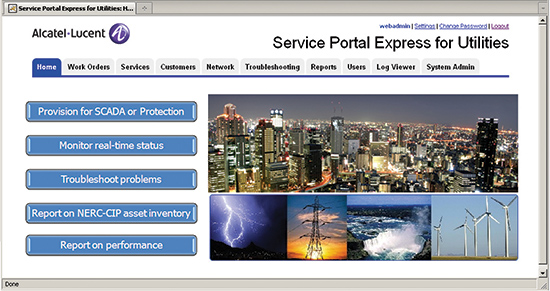This time of year is always a fitting occasion to make predictions and resolutions for the year that lies ahead. Analyst firm IDC has come out with its top 10 predictions for North American utilities in 20131 while Zpryme published their December Smart Grid Index2 which surveyed industry players on, among other things, their intentions and priorities for 2013.
It’s kind of obvious that the effects of Hurricane Sandy figure prominently among the predictions. The scale of Sandy was unprecedented, and it seems the resulting debate has been similarly proportioned. But the aftermath of a natural disaster is always a confusing place to be and so it’s taking a little time for thoughts to be collected and opinions to settle.
With more than 8 million people affected by power outages due to Sandy, some of whom remained without electricity for weeks, the debate about what our industry needs to improve has been pretty fierce. While some utilities certainly fared better than others, I don’t think that’s necessarily a reflection on anyone’s performance; rather on the vital role that utilities play in their communities. Regardless, the expectation – and therefore some of the major predictions people are making for 2013 – is that we will see an increased focus on ways of ensuring that the next major storm to strike our shores does not have the same impact.
Away from Sandy, another recurring prediction for 2013 concerns cyber security. The Senate may have recently rejected the Cybersecurity Act of 2012 but it most definitely hasn’t gone away for good. And even so, both the North American Electric Reliability Corporation Critical Infrastructure Protection (NERC CIP) regulations and the National Institute of Standards and Technology Interagency Report (NISTIR) 7628 both have plenty to say on the subject. In the last edition of Electric Energy T&D, there was an excellent guest editorial3 on the subject by Eric Byres at Belden Inc. And in October the US Secretary of Defense, Leon Panetta, weighed in on the subject in a speech at the Intrepid Sea, Air, and Space Museum in New York, likening the threat to U.S. critical infrastructure as an impending “Cyber Pearl Harbor.” Some recent research, again from Zpryme4 , further indicates that cyber security will continue to be a headline grabber for utilities in 2013.
There’s a third prediction that I’ve seen crop up on more than one pundit’s list for 2013, and that is a focus on operational efficiency. Like the predictions following Sandy, there’s no great surprise in that one. Operating costs have been a priority for many years and there is significant pressure on the industry to update and evolve our critical infrastructure to become more cost efficient and extensible in order to avoid, or at least delay, the need to build the really expensive things like power plants and transmission lines. There does seem to be a general consensus that 1) technology will be increasingly important for creating efficiencies, and 2) utilities will be bolder about investing in these new technologies in order to reduce the inefficiencies of the old.
Finding the thread
Call me crazy, but this predicting business looks so easy I thought I’d give it a go! Now, I am a telecoms guy, so naturally I’m coming at it from that perspective. But it seems to me that there’s an obvious common thread to all the predictions I’ve already mentioned, and that thread is telecommunications. I’ll reveal my 2013 prediction at the end of this article, but first I’ll take you through my reasoning. Much of the debate post-Sandy has been about the smart grid. Did it fail us? Did it help? Have we done enough? Is it time for something new? There appear to be three camps:
- The hard-liners, who say that smart grid can’t save us from another Sandy and want to see supply physically hardened and protected through actions such as burying cables or cutting back trees around overhead lines.
- The intellectuals, who believe that pushing on with smart grid deployments, i.e. increasing the intelligence and automation, will enable us to isolate outages at a more granular level, both reducing the number of people affected and speeding up recovery times. Simply put, if we can broadly deploy intelligent circuit reclosers and rerouting technology sitting every few houses rather than every few blocks, any interruption in supply can be limited to just those few houses rather than entire neighborhoods. Similarly, a central control room would be able to pinpoint where an interruption occurs down to a few yards or so, so dispatching a team to deal with it is faster and more efficient.
- The alternativists who want to diversify supply with alternative and distributed generation, such as adding micro and renewable sources to the grid, or self-sufficient capabilities that can operate independently from the grid if necessary, such as New York University’s cogeneration5 capability.
I guess there’s a fourth camp, which includes me – the pragmatists. That none of the above approaches on their own will be right for every utility and that a combination of all of them will be necessary.

Adding renewable requires extending communications connectivity to the farthest edges of the grid
The link to communications on all of these is strong. If we begin burying cables, then be sure to bury the controlling communications network alongside. If we add more intelligence and more devices to the grid, we need to ensure the communications have the bandwidth to transport that intelligence quickly and reliably, to and from where it’s needed from the core to the farthest edges of the grid. And if we add more energy sources, they also need communications connectivity to monitor and control their energy flow so that they don’t destabilize the grid and compound the problem.
With the predictions around cyber security, communications is obviously at the heart of the issue; if not addressed as it gets deployed, communications equipment provides the way in for cyber attackers. I firmly believe in my grandmother’s old adage that prevention is better than having to find a cure. Therefore, any steps we can take to improve the security of the communications network by designing it in from the start so that it cannot be breached makes for a sound strategy.
There are many possible angles on the theme of operational efficiency. The IDC predictions talk about Chief Information Officers getting to grips with operations-enhancing IT investments, and further deployment of Distribution Automation and monitoring devices to improve grid operations. Once again, communications is a necessity in these areas. Jesse Berst, Chairman of the Smart Cities Council, is recently quoted as saying, “We are heading toward the day when utilities won’t have to have the four or six or 10 separate networks they maintain now, but only one.” For the sake of transparency, I need to mention that he said this in a review6 of one of Alcatel-Lucent’s products. But still; it’s another respected industry heavyweight pointing to communications as a means to achieve significant operational efficiencies.
Future-proof foundations
With that in mind, I’d like to share a few thoughts on what utilities can and perhaps should be doing with their communications networks in 2013.
The first consideration is that whatever is done needs to be future proof. We are in a situation today where many utilities are managing multiple networks due partly to institutional momentum, and partly because of a lack of ability to predict and/or justify to the regulators what potential needs may arise in the future. So the communications network must provide the foundation that can absorb new applications for increased operational efficiency, flexibility, and productivity as and when they are invented. Second, the solution must be highly reliable: the ideal solution is one that offers at least the same level of reliability, QoS (Quality of Service), and even better security than the communications networks currently in operation while supporting the full array of existing TDM and new IP/Ethernet services that are needed for core operations and smart grid deployments. Third, the network must get close to customers – both electricity consumers and producers – to empower consumption and production choices. Finally, all this must be achievable in a reasonably rapid and certainly cost-effective manner, keeping CAPEX and OPEX to a minimum.
It is generally acknowledged that IP (Internet Protocol)-based networks are the way to go. Why? Because IP is the dominant standard for communications networks globally. It is the backbone of the Internet, and as such, there are many parties with a vested interest in IP remaining the future-proof foundation of all communications quite possibly forever. Or at least until we have telepathy. But IP represents quite a shift for utilities and transmission operators who have been maintaining traditional time division multiplexing (TDM) over Synchronous Digital Hierarchy (SDH) or Synchronous Optical Network (SONET) networks. And whereas in the past distribution operators have only needed minimal communications coverage in most of their medium and low voltage service territories, they now face the challenge of extending and deploying new communications infrastructures outside the core and towards the remotest edges of the grid to support distribution automation, renewables and micro-generation sources that could destabilize the electrical load if not carefully monitored and controlled.
IP technology serves as the bridge between applications and the underlying communications medium. This is providing utilities with the capability today to deploy new IP-based Smart Grid applications, such as:
- IP-based supervisory control and data acquisition (SCADA);
- IEC 61850-based substation systems;
- Synchrophasor systems;
- Video surveillance systems;
- Distribution automation;
- Advanced metering infrastructure;
- Other applications that include voice over IP (VoIP), IP mobile radio, Wi-Fi® mobility, physical substation security, corporate local area network (LAN) access, and more.

IP/MPLS can be used throughout a Smart Grid communications network,
supporting today’s TDM applications and future IP-based technology
(click to enlarge)
Putting IP to work for utilities
So while IP clearly can be considered as a future-proof possibility, does it meet the other compulsory criteria: Is it secure? Will it be reliable? Can I manage it? Can it support the applications I use today?
Well, the honest answer is no, not on its own. But there is a proven way it can be made to. To support mission-critical traffic, a technology called MPLS (Multi-Protocol Label Switching) must be added to the IP-based communications network. MPLS is commonly used by telecom service providers to add the deterministic performance advantages of a circuit-based network to an IP network and enable network convergence, virtualization and resiliency. In other words, with MPLS, IP becomes just as fast, predictable, and reliable for delivering all traffic as the current utility networks. Even that most critical of applications – teleprotection – has been proven to work over IP/MPLS7 with the same or better performance as on TDM networks. It does this by separating (virtually) the different types of traffic or applications. The traffic flows can also be prioritized so, for example, teleprotection and SCADA will always get priority over CCTV or intranet traffic. That’s right, I said intranet traffic: IP/ MPLS connectivity out into your sub-stations and other remote locations can even provide the single connection for engineers into your corporate network.
But with that extension of connectivity into lower value and less-secured assets, like sub-stations, there is an increased risk of cyber attacks. I read a news article8 in the New York Times a while back talking about a paper by a Chinese graduate student that discusses how easy it is to compromise the smart grid by breaking into low-value, less protected assets and causing a cascading failure across the grid. This is, of course, denied as being possible by some but regardless, with the right products, IP/MPLS can bring a variety of answers to the cyber security table:
- Mechanisms to protect the management, control and data planes through access control lists, filters and authentication of signaling messages, assist in the prevention of session hijacking, spoofing, denial of service attacks and other such malicious network behavior.
- Strong password security is provided by SNMPv3 confidentiality and integrity features and Secure Shell (SSH) encryption.
Security with an IP/MPLS network is further enhanced when integrated with:
- Stateful firewall to stop unexpected and unwanted traffic from entering the network.
- Network address translation (NAT) to protect and hide private addressing space from external entities.
- Group encryption to protect sensitive data during transit and ensure data integrity and privacy.
- Intrusion detection system (IDS) and intrusion protection system (IPS) to detect and protect against network and traffic anomalies.
Smooth evolution
So the technology to improve reliability, security and operations exists. IP/MPLS. But how do you get to it?
Well, a flexible, evolutionary transformation is desired in order to preserve existing investments and to minimize risks. As I’ve explained, IP/MPLS can support TDM and legacy applications and one approach amongst Alcatel-Lucent customers has been to deploy an IP/MPLS network then transfer applications in batches or one at a time, decommissioning old legacy networks as they go.
That means there’s never any risk to reliability, and the transition can be managed as business models, technical expertise, or budgets dictate. The end result is that all your applications and services are concurrently supported by the same IP/MPLS network, so the overall number and costs of telecom equipment required and maintained are drastically reduced. You then have a future-proof network just aching to take on the traffic generated by an explosion of smart devices and new IP applications.
Another advantage of using IP/MPLS from the core all the way to the field area network is that it can be used on many transport technologies. Core networks commonly use fiber optic cabling, but that’s not generally economically viable in remote locations. IP/MPLS can be combined with microwave transport in areas that lack fiber, or with wavelength division multiplexing (WDM) transport when a very large capacity is required. Frequently IP/MPLS is combined with high-speed Ethernet transport from 1 Gigabit (Gb) to 10 Gb and 100 Gb. It has even been deployed over WiMAX and other ‘point-to-multipoint’ radio technologies. That’s quite a few supported technologies. The bottom line is that IP/MPLS is flexible enough to work across different physical and technological media, depending on the needs of the grid.
By the way, a single, converged, end-to-end IP/MPLS network only needs a single service management platform, making it far faster and more efficient to introduce, operate and troubleshoot any and all devices and services. With IP/MPLS, deploying new services has now become child’s play; using the service management software, click on the end points and select a service such as SCADA from the menu and it is automatically and remotely provisioned with the correct QoS and security parameters for the application.

The benefits of IP include simple ways to deploy and configure new services and
devices, such as Alcatel-Lucent Service Portal Express for Utilities
Betting on IP/MPLS
So do you still want to hear my crazy prediction for 2013? Well it’s this: I believe that 2013 will be the year that IP/MPLS goes mainstream for utilities, from the core to the very edge of the grid. One by one the concerns have been allayed, the benefits have been proven, and the numbers have been shown to make sense. And whether or not you want to call it part of a Smart Grid strategy, I think fundamentally it just makes for a smart business strategy.
About the Author

Mark Madden is the Regional Vice President for Utility Markets in Alcatel-Lucent’s Americas Region. In 2012, Mark was elected to the board of the Utilities Telecoms Council (UTC) Smart Networks Council. With Alcatel-Lucent, Mark is responsible for utility market strategy, strategic partnerships, and business development in North and South America. Mark joined Alcatel- Lucent in 1996 and has over 30 years experience with leading companies in the Information and Communications Technologies industry. Contact Mark at mark.madden@alcatel-lucent.com.
1 Source: IDC Energy Insights Predictions 2013: North American Utilities
2 Source: Zpryme Research & Consulting, Smart Grid Index: December 2012
3 Source: Electric Energy T&D Magazine, November-December 2012, Guest Editorial: Securing Utilities from Cyberattacks “For the times they are a-changin’’
4 Source: Zpryme Reserach & Consulting, 2012 Utility Cybersecurity Survey
5 Source: New York Times, December 18 2012, “How N.Y.U. Stayed (Partly) Warm and Lighted”
6 Source: Smart Grid News, December 7 2012, “New Alcatel-Lucent grid product part of a larger grid communications trend”
7 Source: Iometrix Test Report, August 26 2011, “Teleprotection over IP/MPLS Networks
8 Source: New York Times, March 20 2010, “Academic Paper in China Sets Off Alarms in U.S.”







